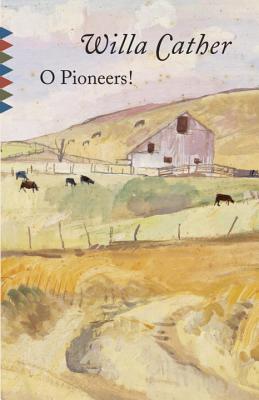Adapted from My Abandonment by PETER ROCK
Reviewed by HANNAH GERSEN
In fairy tales, the forest is a dark, dangerous place, populated by wolves and other menacing creatures, but for Thomasin and her father, Will, a veteran of the wars in Iraq and Afghanistan, the forest is a respite, a place of quiet and calm. More than that, it’s their home. For several years, they’ve been camping in Forest Park, an enormous urban park on the outskirts of Portland, Oregon. Although they have gone undetected all this time, they still do practice drills in case they should be discovered. In an early scene, Will critiques his daughter’s hiding place, telling her that her socks give her away. Actually, it’s Thom’s eyes that betray her: you can see her loneliness and her restlessness. As a younger kid, 24-7 camping may have appealed to her, but when we meet Thom, she is a young teen, full of curiosity about the outside world and eager to meet new people. The only thing that keeps her in the woods is her deep love and sympathy for her father.
Thom and Will are inevitably discovered, and Leave No Trace tells the story of what happens after: how they adjust to life in the world outside their forest. Thom is shocked to find out that, according to most people, she is homeless—or, in the parlance of a social worker who assesses her, “unhoused.” Everyone wants to know why they’ve lived for so many years in a park, but Will and Thom have little to say. Likewise, the closeness between father and daughter is regarded with unease, but there is no sign in the film of anything inappropriate. When pressed, Thom describes her father as “home.” Director Debra Granik, who also co-wrote the script with Anne Rosellini, keeps all the action in the present, with no explanatory flashbacks. In a very short exchange of dialogue, we find out that Thom’s mother died when Thom was very young—too young to remember her. The most we get for backstory is a newspaper clipping, discovered by Thom, with a headline that refers to the large number suicides in her father’s battalion.
Thom hasn’t been to school in years, but testing reveals that she’s above grade level. She’s also naturally social, sweet, and openhearted. When she and Thom are “rehoused,” she settles in cautiously, mainly because she’s uncertain how her father will react to being indoors. Secretly, she’s pleased with some of the material comforts that she’s missed out on over the years: toys, fresh bedding, and a pantry of food. When she meets a neighbor boy with a pet rabbit, he invites her to join the local 4-H rabbit club, and when she shyly shows up at a meeting, it feels like the beginning of a new, happier life for her.
Will does not adjust as well, even with the generous support of a man who admires Will’s years of living in the wild, as well as his military service, and offers him a place to live and work on his tree farm. It seems like the perfect set up: a quiet, rural place, a job that keeps him outside, and a simple house. But Will is miserable. It becomes clear that living in the woods was a kind of self-medication, a way to regulate his moods and cope with what seem to be recurring panic attacks. For Will, the world outside of Forest Park is full of noise, unnecessary rules, and reminders of past losses and traumas. He tries, for Thom’s sake, to adapt to living indoors. “We’re still free to think our own thoughts,” he says. She repeats these words back to him several times over the course of the film, a reminder that freedom is a state of mind, but she doesn’t really understand the depth of her father’s pain. Also, her idea of freedom is the opposite of his: for Thom, the necessarily strict routines of daily camping were confining, and it’s the outside world that beckons with opportunity.
Granik captures a calm, watchful performance from the teenage actress, Thomasin McKenzie, who plays Thom, and whose point of view dominates the film. (Granik’s previous film, Winter’s Bone (2010), introduced the world to a young Jennifer Lawrence.) McKenzie plays Thom as a girl at the end of childhood, someone who is beginning to understand her own capacities. What’s devastating is her growing awareness of her father’s limitations, and the debilitating effects of his years of military service. Ben Foster is quietly heartrending as Will, who must reckon with the fact that his way of coping—one that worked very well for him for years—is no longer sustainable. He rarely talks about his inner torment; the most he’ll do is nod when other vets allude to it. Sometimes it seems that his stoicism is his way of protecting his daughter; other times, it’s that he’s shielding himself.
Leave No Trace is adapted from Peter Rock’s novel, My Abandonment, which was inspired by a newspaper story in The Portland Oregonian about a father and daughter who were found living in Portland’s Forest Park. Much of Leave No Trace is filmed in Portland, as well as other locations in the Pacific Northwest. It’s wonderfully observant of Portland, but it’s not the wacky suburbs of Portlandia; instead Granik reveals the less well-known, but possibly more universal side: a homeless encampment at the edge of Forest Park, veterans gathering at the VA, teenage girls under the care of the state, and hitchhikers at railroad yards. Ultimately, Will decides that he’s not comfortable living under the watch of state social workers, and he and Thom hit the road, in search of a new outdoor home. As we peer into different communities and homes, from a hunting cabin, to a mobile home park, to the cab of a trucker, the camera lingers on the details of these private kingdoms: the décor, snacks, gardens, lawn ornaments, and pets, all of which hint at their domestic routines. Thom takes in every detail, hungry for security, comfort, and social life.
Thom and Will are an odd pair, and most people initially regard them with suspicion and alarm for Thom’s safety. But once they learn their story, strangers are welcoming and generous. There’s a particularly American respect for their desire to live outside the lines of society and public institutions. It’s a reverence for self-reliance mixed with a collective fantasy of survival against the elements/the Man/the apocalypse. There’s also the fact that Will’s debilitating depression is due, in part, to his service in a war that is still ongoing with no end in sight. Why would he trust the government to fix what ails him? The social workers who try to help them are shown to be kind and practical, but clueless, and at the mercy of paperwork. The counselor assigned to Will sets him up with a computerized psychological examination that consists of hundreds of yes/no questions. Will’s eyes go dead as he begins to answer them. He’s surrounded by typically bland office furnishings, everything beige and gray, lit by fluorescent lights. All of it seems so unforgivingly lifeless after the lush, deep greens of Forest Park. Suddenly, it’s not so hard to see why he chose to bring his daughter into the woods.
Hannah Gersen is a fiction writer and staff writer at The Millions. Her debut novel, Home Field, was released in 2016. She writes about movies on a semi-regular basis on her blog, Thelma and Alice.





